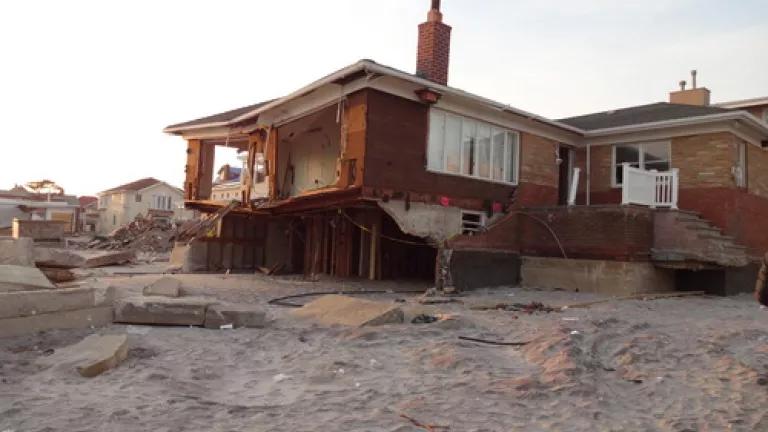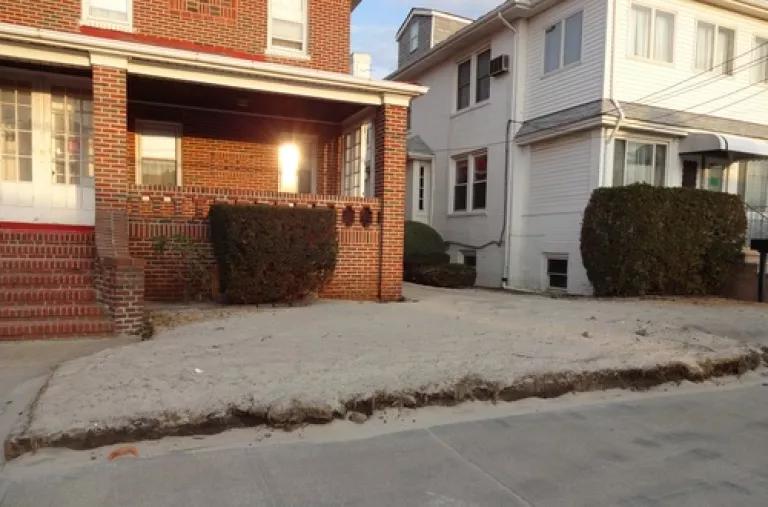
This is one in an ongoing series of NRDC staff blogs dealing with environmental health, natural resource and quality-of-life impacts of Hurricane Sandy. NRDC is planning wide-ranging advocacy activities in the storm's wake, which will also be covered by my colleagues here on Switchboard.
--
The mark that Superstorm Sandy left on communities in the northeast U.S. is difficult to describe in mere words. A little over a week ago, some of my colleagues and I had the opportunity to visit some of the most affected areas of Staten Island and the Rockaways in Queens. The images and video footage that we’ve all seen in the news don’t convey the magnitude of the damage that these areas have sustained. One month later, the piles of debris from gutted homes that lined the streets are largely gone, but many of the houses that had entire floors wiped out still lie in ruins. Having seen some of the damage firsthand weeks after Sandy made landfall, I can only imagine the devastation in the immediate aftermath of the storm as rushing water and strong winds wreaked havoc.
- Damaged home in the Belle Harbor area of the Rockaway Peninsula
On some streets we visited, the lack of apparent damage was deceptive. While some houses had little visible exterior damage (the only thing that looked out of place was the layer of sand on front yards located blocks from the beach), the basements and first floors were completely flooded during the storm. We also heard stories of people living in houses with dangerous levels of mold because they have nowhere else to go and are not receiving the assistance necessary to properly rid their homes of these mold infestations.

- Layers of sand visible on sidewalks and in front yards in the Rockaways, Queens
In light of the widespread damage and the great need for federal assistance, Congress has convened several hearings on the storm. In the hearings I’ve attended, senators and representatives alike from affected states have vividly described the lasting impact of Sandy on families, homes, bridges and other transportation infrastructure, water treatment facilities, electrical networks, small businesses, and coastal fishing communities.
Many members of Congress have also recognized that we’re entering an era of more extreme weather as climate change and rising sea levels increasingly threaten our families and neighborhoods. The public also recognizes the connection between climate change and extreme weather. According to a recent poll of New Yorkers, nearly 70 percent believe that recent extreme storms are evidence of climate change.
As temperatures and sea levels rise further, it will become increasingly critical for us to prepare our communities and infrastructure for more powerful storms, flooding, drought, and other extremes. Making investments now to increase the resiliency of existing infrastructure, restore natural defenses like wetlands and sand dunes, and ensure that new structures are designed, built, and located with climate change in mind will help to reduce future damages. Additionally, reducing the amount of carbon pollution released, such as by limiting power plant emissions, will help to reduce climate change and its impact on extreme weather.
Extreme weather events like Sandy and the damage left behind in her wake illustrate the price we pay for not being sufficiently prepared. We can no longer afford to avoid the warning signs and must make the necessary investments and take proactive measures now to prepare for future storms. If we fail to learn from the mistakes of the past, we will be doomed to repeat them.



